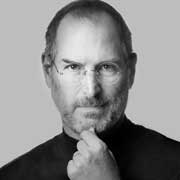


Tags : Marketer, Entrepreneur, Apple Inc, Macintosh, Personal Computer Revolution, Pixar
- Text Size +
An inspirational Life

In the days following October 5, 2011 – the day when Steve Jobs passed away, a cartoon picture was widely shared and emailed in the online world. Titled: Three Apples That Changed The World, the cartoon had caricatures of Eve, Isaac Newton and Steve Jobs. The very fact that the first two apples were connected with Steve Jobs’ Apple, implies that the last apple was equally impactful like the first two. The cartoon was an instant hit with the Twitter and Facebook users.
We have heard and read: what Eve made Adam do with the apple; what an apple falling from a tree led Newton to, but what Steve Jobs did with Apple is something we haven’t yet stopped talking about.
Steve Jobs, lesser known by his real name Steven Paul Jobs was the co-founder and chief executive officer of Apple and Pixar Animation Studio. In his influential career, the charismatic businessman and designer made remarkable contributions in the field of computer and consumer electronics. In 2006, when Disney acquired Pixar, he was on the board of directors of the Walt Disney Company. Through Apple products, he brought about personal computer revolution and also changed the way we perceived music, movies and mobile phones.

Joanne Schieble, daughter of Arthur Schieble, was a graduate student at the University of Wisconsin. Her father, a German descent, had immigrated to the outskirts of Green Bay. In the early days of settlement, the Schieble’s had owned a mink farm and also tried their hands in other businesses, including real estate and photoengraving.
Joanne had a Catholic upbringing. Her father was very particular about his daughter’s relationships. He had strongly disapproved her first love Abdulfattah Jandali because the boy was a non-Catholic. Abdulfattah Jandali, a Syrian and the youngest of the nine children of a Muslim family, worked at the University of Wisconsin as a teaching assistant. He hailed from a well-to-do family that had large holdings in Damascus and Homs. They were so rich and influential, that at one point of time they used to control the price of wheat in the region. His mother was a traditional Muslim woman and a conservative housewife. In the house of Jandali’s, education had always been of high importance. Hence, they sent their son Adulfattah to a Jesuit boarding school, later to an American University in Beirut for an undergraduate degree, and finally to the University of Wisconsin to pursue a doctoral degree in Political science.
Abdulfattah and Joanne met at the University of Wisconsin and fell in love. The thought of wedlock between a Muslim boy and a Catholic girl, in the conformist society of 1950s was unacceptable. But as they say, ‘love is blind,’ nothing could stop the new lovers. In the summer of 1954, when the couple was twenty-three, they went to Abdulfattah’s home in Homs, Syria. Here, Joanne learnt to cook Syrian dishes. When they returned after two months’ stay, Joanne discovered that she was pregnant. On one hand where a new life was on its way, on the other, Joanne’s father was dying. Joanne’s father, Arthur Schieble, was a conformist and he threatened to disown her if she married Abdulfattah. A pregnant Joanne found herself into a fine kettle of fish. As the society would not accept a child outside marriage and the Catholic Church condemned abortion, she moved to San Francisco. There, she was taken in by a doctor who took care of unmarried mothers and helped with adoptions.
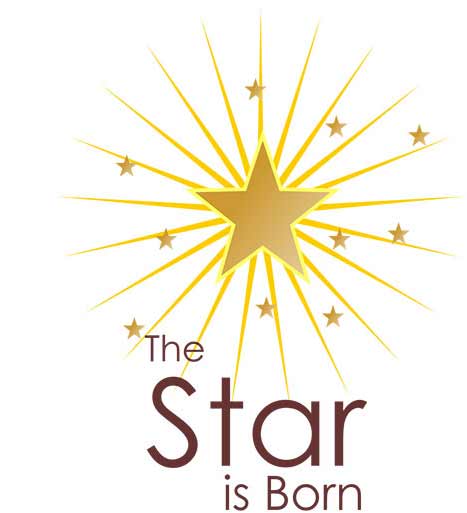
On 24th February, 1955, Joanne delivered a baby boy. But understanding the critical situation of her father’s health, she did not want to upset things for him and so she put the child out for adoption. However, her only condition was that the child must be adopted by college graduates. A lawyer and his wife came forward to adopt the child, but backed out saying they wanted a girl. The next couple – Paul and Clara Jobs – were high school dropouts, Paul had passion for mechanics and Clara was a bookkeeper. Learning that the couple were school dropouts, Joanne took time to sign the adoption paper. On the back of her mind, she was speculating that in case her father passed away, she could keep the child with her. To put it in famous singer John Lennon’s words: Life is what happens to you while you're busy making other plans. Her father stayed around. After much of dawdling, Joanne finally signed the adoptions papers with a promise that the adoptive parents would provide the child with a college education. Arthur Schieble died after the adoption was settled. After almost nine years into marriage, the Jobs’ – Clara and Paul had in their arms their bundle of joy; they named him Steven Paul Jobs.
After dad’s death in August 1955, Joanne married Abdulfattah just after Christmas. A year later, their second child was born, who later grew up to become an acclaimed novelist Mona Simpson. However, the marriage was short lived and the divorce soon followed in the year 1962.

Paul Reinhold Jobs, Steve’s adoptive father was of German origin. He had a calm and gentle disposition, despite of being broght up by an alcoholic father. Paul was raised on a dairy farm in a German town, Wisconsin. He dropped out of high school, did a few mechanic jobs and at the age of nineteen, joined the Coast Guard. He was a fine machinist and a ‘used-car’ salesman. After serving the Coastal Guard during the World War II, Paul took up a job with a finance company. He was in ‘bad debts collection’ section. In his spare time, he fixed used-cars and sold them. The profit he made from selling these cars would go to Steve’s future college fund. Clara, an Armenian-American was born in New Jersey. When she was a child, her parents fled Armenia to escape the Turks and settled in the Mission District of San Francisco. Clara had a past which she did not speak about when she met Paul. Her husband of the first marriage was killed in the war. As she wanted to make a new start with Paul, she felt it was not important to tell him about it.
The inevitable aftereffect of World War II was felt by most people. The Jobs’ were no exception to it. They had little money so they moved to Wisconsin and put up at Paul’s parents’ place for a few years. Paul then worked with International Harvester as a machinist and later took up a full time job as a salesman. With nine years of marriage behind them, there was still something missing. Clara was suffering from an ectopic pregnancy. Under this, the fertilized egg got implanted in the fallopian tube instead of the uterus and therefore the pregnancy could never complete its term. Finally, the couple decided to adopt one more child.
Now that Steve was two years old, the Jobs decided to adopt a girl. They named her Patty. The kids were growing, Steve was five and Patty three when Clara thought it would be better to have them raised in San Francisco. Somehow, she managed to get Paul and the kids move into a tract house in Mountain View, San Francisco.
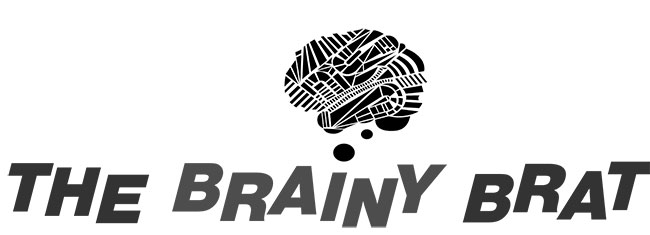
Childhood memories make some of the finest wallpapers of our life. Little Steve, what his parents and teachers recall, was a curious child, much advance for his age. His curiosity would get him into situations that would end up into hospital visits. Once he had inserted a hairpin into an electrical outlet and got his hand burned.
In another instance, he had taken in ant poison. Rearing a child like Steve wasn’t easy. His mother once confided that as a toddler, Steve was very difficult to handle. He would wake up in the morning before the rest of the house. Thus to keep him busy, his parents made sure they bought him a rocking horse, a record player and some Little Richard’s records. When Steve grew a bit older, his father put up a workshop for him in the garage. He showed Steve the workshop and said, “Steve this is your work bench now.” He gave his son a tool kit and showed him how to use the hammer. Steve remembers spending a lot of time with his dad, learning how to ensemble and reassemble parts of objects. He was impressed with his father’s skillful craftsmanship and fastidious attention to details.
His father emphasized on the importance of doing things right. His father would say, “When you’re a carpenter making a beautiful chest of drawers, you’re not going to use a piece of plywood on the back, even though it faces the wall and nobody will ever see it. You’ll know it’s there, so you’re going to use a beautiful piece of wood on the back.” Steve would later apply this lesson over and over again in the designs of Apple products.
Steve vividly remembers, he was six or seven years old, and he was telling the girl who lived across the street that his parents never hid the fact of him being adopted from anyone. To which the girl asked, “So, does that mean your real parents didn’t want you?” This question hit him badly. Steve said, “Lightening bolts went off in my head and I remember running into the house, crying. My parents said, ‘No, you have to understand.’ They were very serious and looked me straight in the eye. They said, ‘We specifically picked you out.’ Both of my parents said that and repeated it slowly for me. And they put an emphasis on every word in that sentence.”
The feeling of being adopted made Steve feel ‘abandoned yet chosen and special’. His closest friends say that the knowledge of being given up at birth left some scars. They would say, that his need for control grew out of deep sense of abandonment. While talking to his biographer about him being adopted, Steve said, “Knowing I was adopted may have made me feel more independent, but I have never felt abandoned. I always felt special. My parents made me feel special.”
Later, when Steve was asked by the media about his “adoptive parents,” he snapped at them saying, “They were my parents 1,000%.” About his biological parents, he was brusque: “They were my sperm and egg bank. That’s not harsh, it’s just the way it was, a sperm bank thing, nothing more.”

Prankster in School
Steve’s parents observed that he was an exceptionally bright child. On learning that Steve was interested in reading, his mother taught him to read even before he could learn it at school. But then, learning to read even before his other classmates, put his teacher in a tight spot. They would find it difficult to keep him interested in things he already knew. As a result, he would find school dull and boring. To make things fun, he would play pranks on his classmates and teachers.
Many of the Monta Loma Elementary School kids rode bikes to school and would lock them up in racks outside. In 3rd grade when Steve was eight years old, he and his friends traded the combination of their bike lock with many of their classmates. One day, Steve and his friends switched the locks around and guess what, until about ten o’clock that night his schoolmates were busy sorting out their bikes. Steve wouldn’t even spare the teachers. Once, he and his friends let a snake loose in the classroom and planted a small

explosion under the teacher’s chair. On two or three accounts, he was sent home. However, he doesn’t remember being ever punished. In fact, he remembers his father defending him, saying, “If you can’t keep him interested, it’s your fault.”
In 4th grade, Steve met the saint of his life, his teacher – Imogene “Teddy” Hill. Mrs. Hill was very kind with Steve and she showered all her attention on him. One day, she asked her students, “What is that you don’t understand about the universe?” Her precocious student, young Steve answered, “I don’t understand why all of a sudden my dad is so broke”, this reply made Mrs. Hills realize the trauma little Steve was going through at such a young age, and which could possibly have been one of the reasons why he could not concentrate in class.
Within a few weeks Mrs. Hill figured out how to keep her unusual student interested. She offered Steve a deal: if he could finish a math workbook on his own and get at least 80 percent correct answers, she would give him five dollars and a giant lollipop. Steve looked at her like he wanted to say ‘Are you a crazy lady?’ However, he accepted the challenge. With time, Steve developed respect and admiration for Mrs. Hill and thus, he started doing the assignments given to him without any bribe. She once even presented him with a kit for making a camera by grinding his own lens; this was Mrs. Hill’s love for Steve.
Years later, when Mrs. Hill met Steve’s co-workers at Apple, she entertained them by showing a photo of her class on Hawaiian Day. In the photo, Steve was wearing a Hawaiian shirt which he had managed to borrow from his classmate. Steve said: “I learned more that year than I think I learned in any year in school.” He added, “I’m one hundred per cent sure that if it hadn’t been for Mrs. Hill in fourth grade and few other teachers, I would have absolutely ended up in jail.”
Steve now found school interesting and his performance was on track. In fact, he had scored so high in his tests that the school officials recommended him to skip a couple of grades. However, his parents let him skip just one grade, not two. He moved to grade six.
As Steve recalls, “I just wanted to do two things; read books because I loved reading and go outside and chase butterflies.” Steve was an extreme deviation from the mean and did not like to follow instructions.
Later in Apple, there were number of instances where he showed this characteristic: With the introduction of floppy drive, he got the 5 ¼ inches floppy drive replaced with the 3 ½ inches and later designed diskless computers. As far as stylus was concerned, he was not in favour of using stylus for mobiles. He said, “When God has given 10 styluses then why do you need extra.” So you see, he would not do things just because other were doing them.
Middle school, academically was tougher. But, the precociousness of Steve still persisted. His sixth-grade report read: “An excellent reader”. However, it further added: “he has great difficulty motivating himself or seeing the purpose of studying and reading.”
Apparently in seventh grade, things became different. There was a much rougher crowd in class and since Steve had skipped one grade, he was the youngest among the lot. His classmates bullied him and fights began to be a common thing. By the mid-term of his seventh grade, Steve felt miserable. In somewhat of an ultimatum to his parents, he said that if he had to go back to school there again, “he just wouldn’t go.”
Steve’s parents then weren’t well-off financially, so to move into a newer place was not an easy thing to do. Somehow, they pulled in together whatever little they had and bought a three-bedroom home in Los Altos, a city in Santa Clara County, California. Los Altos is at the southern end of the San Franciscan Peninsula, in the San Francisco Bay Area. The Santa Clara County, in early 1950s came to be known as the Silicon Valley, after a number of semi-conductor companies sprouted up across the Bay Area. Thus, Steve was lucky to be growing up in a neighborhood packed full of engineers and tinkerers.
Talking about his old house, Steve said, “The place formerly was an orchard of apricot, when I moved here, these corners were still orchards,” And pointing out to a house, he added, “The guy who lived right there taught me how to be a good organic gardener and to compost. He grew everything to perfection, I never had better food in my life. That’s when I began to appreciate organic fruits and vegetables.”

When it came to faith, the Jobs’ were not fervent about their faith. But they wanted their kids to have a religious upbringing. They took them to the Lutheran church on Sundays. Until he was thirteen, Steve was regular with his church visits. Then, something happened and he left the church.
In July 1968, Life magazine published a shocking cover page – a picture of a pair of starving children in Biafra. Badly shaken by the picture, Steve took the magazine to Sunday school. He asked the church’s pastor: “If I raise my finger, will God know which one I’m going to raise even before I do it?” The pastor answered, “Yes, God knows everything.” Steve then pulled out the magazine and showing the cover page to the pastor he asked, “Well, does God know about this and what’s going to happen to those children?” The pastor replied, “Steve, I know you don’t understand, but yes, God knows about that.” And after that episode, Steve never went back to the church. He was clear that henceforth, he will have nothing to do with worshipping such God. He nourished his spirituality quotient by studying and engaging into practices of Eastern spirituality and the tenets of Zen Buddhism.
Years later, while reflecting on his spiritual feeling, Steve said: “Religion is at its best when it emphasizes spiritual experiences rather than received dogmas.” He told his biographer, Walter Isaacson, “I think different religions are different doors to the same house, sometimes I think the house exists, and sometimes I don’t. It’s the great mystery.”
Steve was in the 9th grade when his father started working for a company called Spectra-Physics. The company made lasers for electronics and medical products. As a machinist at Spectra-Physics, Steve’s father crafted the prototypes of products that the engineers were devising. Now, his fourteen year old son had grown up and no more shared similar interests in mechanics. But, he made sure to get Steve electronic gizmos from time to time. Steve had few friends of his age so he began to hang out with some seniors who were into the counterculture of the late 1960s. With counter culture came the Hippies and trend of free expressions and drugs. Steve later began to take LSD, an illegal drug and drop acid with his friends.
In the year June 2005, as a commencement speaker for a college graduation ceremony, Steve Jobs told three stories from his life. Story One : ‘Connecting the dots’ which was about him being adopted and his college life; story Two: ‘Love and Loss’ which was about being lucky to have love come into his life early, and unlucky, for not having it stay for long. It also revealed about the creation of Apple and being fired from Apple, and lastly, story Three: ‘Death’, which was about his fight against cancer. He ended his speech on a profound note: “Stay Hungry, Stay Foolish”. According to Steve, “The journey is the reward.” To know how this journey started, we will learn about it dot-by-dot and as we learn more, we will be able to connect the dots better.
![]()
Living in a fine neighborhood of engineers, there were high chances of running into one as well. One such engineer which Steve ran into, was Larry Lang, in whom he found a mentor. Lang intrigued him with an old-fashioned carbon microphone set up in his driveway that did not need an electronic amplifier. Seeing young Steve fascinated and all lit up, Lang introduced him to Heathkits. The assemble-it-yourself kits – Heathkits came with all the boards and parts color-coded. It also had the manuals explaining the theory of its operation. Steve said about them, “[no doubt] You actually paid more money for them than if you just went and bought the finished products.” He recalled, “It made you realize that you could build and understand anything. Once you built a couple of radios, you’d see a TV in the catalogue and say, ‘I can build that as well’ even if you didn’t. I was very lucky, because when I was a kid both my dad and the Heathkits made me believe I could build anything.” In elaborating on what these kits did to him, Steve said, “It gave a tremendous level of self-confidence that, through exploration and learning, one could understand seemingly very complex things in one’s environment.”
In what could be seen as an add-a-friend instance, Larry Lang added Steve to the Hewlett Packard Explorers Club. The club was a group of fifteen or so students and they met in the company cafeteria on Tuesday nights. The club would arrange for an engineer from one of the labs to come and talk about his work. Steve recalled, “My dad would drive me there.” It was during one of those visits that Steve saw a desktop computer for the first time – the 9100A. “It was huge maybe forty pounds, but it was a thing of beauty. I fell in love with it”, Steve added.
At the Explorers Club, the kids were encouraged to do projects. Steve decided to build a frequency counter. This would measure the number of pulses in an electric signal. While working on it, Steve needed some parts that HP manufactured, so he looked up for Bill Hewlett in Palo Alto, California and called him at home. Mr. Hewlett not only answered the call, but also chatted with him for twenty minutes. By the end of it, Steve got the parts he was looking for and a job in the plant where they made frequency counters. He worked there the summer after his freshman year at Homestead High in 1968.
![]()
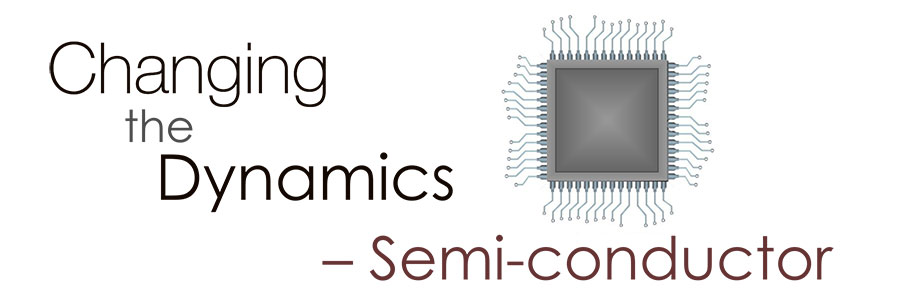
In the late1940s, three scientists : John Bardeen, Walter Brattain and William Shockley invented the transistor. They were working at the famous telecommunication service company, AT&T. This tiny device could direct and amplify electrons. It was built around a material called “semi-conductor.” This was neither a proper insulator nor a conductor and it could send electric current in one direction, but not the other. The semi conducting material was popularly known as a ‘semiconductor’ or ‘chip’.
Semiconductor changed the dynamics in the field of electronics. By replacing the bulkier and less reliable vacuum tubes, the chip was the most manufactured piece of electronics in Silicon Valley. With this material, the scientists and engineers could come up with smaller gadgets such as pocket transistor radios, palm size calculators and eventually a computer.
Semiconductor unfolded a world of possibilities. More and more manufacturers got into manufacturing chips and circuits. The new housing developments replaced the orchards in the valley, and the valley soon turned into the land of chip makers. Thus, the area soon came to be known as the Silicon Valley.
During sophomore year, the fourteen year old Steve took up a job of stock clerk at a cavernous electronic store, Haltek. He spent weekends and the summer working at the store. Here he learnt a great deal about electronic parts. He would go to electronic flea market, haggle for used circuit boards that contained valuable chips or components, buy them and then sell them to his manager at Haltek. It can be said that Steve’s negotiating skills and sense of business dynamics were first spotted here.
The man, who in times to come would own Mercedes and BMWs, had a two tone Nash Metropolitan as his first car. Steve’s father presented him a used-car, after fixing it’s engine . He thought it was an uncool car, but did not want to tell this to his father as it would have meant missing out on the chance of owning a car. However, within a year, Steve saved up enough from his various jobs and got himself a red Fiat 850 coupe with an Abarth engine.
During the summer between his sophomore and junior years at Homestead, Steve began smoking marijuana. On finding some dope in his Fiat, his father asked, “What is this?” Steve coolly replied, “That’s marijuana.” This was one of the few times when Steve had to face his father’s anger; “I got stoned for the first time that summer. I was fifteen, and then began using pot regularly. He wanted me to promise that I’d never use pot again, but I wouldn’t promise.” In his senior years, Steve started dabbling in hash as well. However, during the last two years in high school he found himself at an intersection. Besides being geekily immersed in electronics, he was also into literature and creative endeavors. “I started to listen to music a whole lot, and also started to read more, besides science and technology – Shakespeare, Plato. I loved King Lear.”

During the junior years, Steve’s classmate, Bill Fernandez became a good friend of his. Together, they worked on science fair projects and shared other interests. Steve was known for his long walks; he would go for long walks to talk about his big ideas and difficult matters. He and Bill would go for such walks in the evening and talk about all sort of serious matters, from Vietnam War to girls, from drugs to religion, etc. “We were both interested in the spiritual side of things, and big questions like: Who are we? What is it all about? What does it mean?” Fernandez said, “Mostly it was Steve who would do the talking…He would have a grand passion of the day, or something that was on his mind, and he would bend my ear for hours as we walked.”
Bill began spending his evenings and weekends helping his neighbor Steve Wozniak build a small computer in Wozniak’s garage. Steve Wozniak, a computer engineer and programmer later became the co-founder of Apple Computer. Wozniak created the Apple I computer and also its successor, the Apple II. His works and creations significantly contributed to the microcomputer revolution era. That was a short snippet on Steve Wozniak.
Picking up from where we left – Wozniak was also known as Woz in his friend circle. He was building a small computer in his garage. He was almost five years older than Steve and was his senior at Homestead High. Woz was a star student; he was good at Maths, Science and Electronics.
Steve and Fernandez were deeply into electronics, but Woz was way deeper into it; he was obsessed with the computer. He used to collect and study manuals that would explain how minicomputers worked and would also study their components and connections. And just for fun, he would sketch out designs that would allow him to build it with fewer parts. Woz was in his senior year when he visited the University of Colorado. Apparently, it was the Thanksgiving weekend and everything was closed for holidays. However, in the campus, he found an engineering student who showed him the lab. Moving from Homestead High to University of Colorado wasn’t an affordable option for the Wozniak’s. It was not within their capacity to pay for the out-of-state tuition fee. However, Woz’s father made a deal that he would be allowed to go for one year, but would have to transfer to De Anza Community College back home, the next year.

Bill Fernandez began spending more evenings and weekends at Steve Wozniak’s place, helping him build a small computer. Finally, after putting together the spare parts, they built a computer that had memory good enough to hold 256 typed characters. There was no keyboard or screen connected to it and the memory was too little to do simple math, but still, it could run a program. Woz would write small programs on punch cards that prompted the computer to beep every three seconds or perform a function by flashing lights attached to the front. Wozniak recalled, “It was basically a calculator capable of multiplying numbers entered by a set of switches and displaying the results in binary code with little lights.”
While they were working on building the computer, they drank large amounts of Cragmont cream soda and would ride their bikes to Sunnyvale Safeway to return the bottles, collect the deposits and buy more soda. “That’s how we started referring to it as the Cream Soda Computer.” Wozniak recalled.
Fernandez told Wozniak that there was someone at Homestead he should meet. “His name is Steve. He likes to pull pranks on people like you do, and he’s also into building electronics like you.” Wozniak recalled, “Steve and I just sat on the sidewalk in front of Bill’s house for the longest time, just sharing stories – mostly about pranks we’d pulled and also what kind of electronics designs we’d done. We had so much in common. Typically, it was really hard for me to explain to people what kind of design I worked on, but Steve got it right away and I instantly liked him. He was kind of skinny and wiry and full of energy.”
When Jobs was asked about the first time the two Steves’ met, he replied, “Woz was the first person I’d met who knew more electronics than I did.” He added further, “I liked him right away. I was little more mature than my years, and he was a little less mature than his, so it evened out. Woz was very bright, but emotionally he was of my age.” They would hang out together. It was Wozniak who introduced Steve to Bob Dylan’s music and powerful lyrics. They both became such big fans of Dylan that they would together hunt down for Dylan’s tapes.
Jobs formed a club at Homestead High – the Buck Fry Club. They played on the principal’s name Mr. Bryald and coined the name for the club. Even though Wozniak and his friend Allen Baum had already graduated, they joined forces with Jobs at the end of his junior year to come up with a farewell gesture for his seniors. Baum had tied-dyed with the school’s green and white colors and they painted a huge hand flipping middle-finger salute.
It was Baum’s mother who helped them draw it and showed them how to do the shading and shadows to make it look more real. The entire arrangement was done in such a way that a system of ropes and pulley could dramatically lower the banner as the graduation class marched past the balcony. The banner read “SWAB JOB,” the initials of Steve Wozniak, Allen Baum and Steve Jobs. Are you wondering if this act irked the school authorities? Yes, it did. Steve Jobs was suspended!
Among other pranks, Wozniak had built a pocket device that could emit TV signal. The device was an oscillator and it would jam television signals. Woz took it to the dorm where a group of people were watching TV. He would secretly hit the button and the screen would get all fuzzy with static. The minute someone would get up to whack the TV set, Woz would release the button and the picture would get restored. To make things more annoying, he would keep the picture fuzzy for a longer time, until one of the viewers would touch the antenna. He made them think that they had to hold the antenna while standing on one foot or touching the top of the set. Years later, at a keynote presentation, Jobs was having some trouble in getting a video to work. While the technicians were fixing it, he could not stop himself from sharing Woz’s prank with the audience.
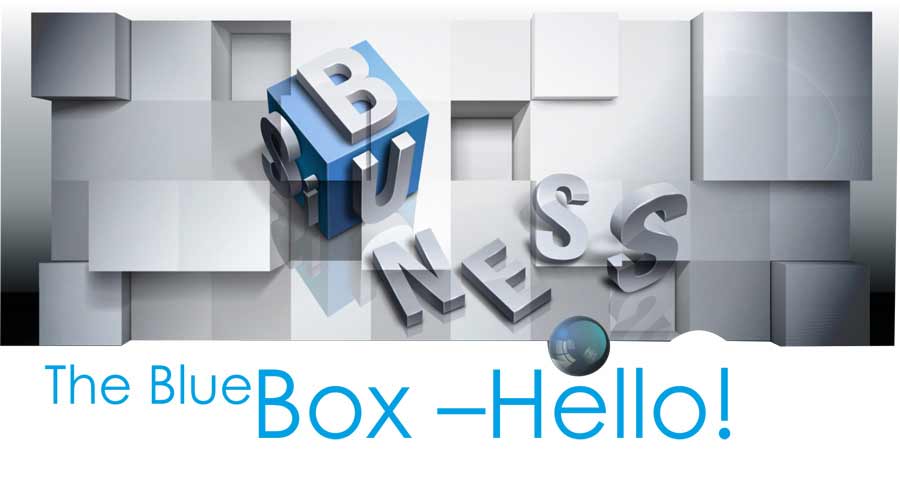
Wozniak left to study engineering at Berkley, Michigan apparently around the time, when the magazine Esquire ran an interesting story on “Captain Crunch.” The title of the story was “Secrets of the Little Blue Box” written by Ron Rosenbaum. It described how Captain Crunch built electronic boxes that mimicked the tone used by the phone network’s call-routing switches. So what about it? With the help of this box, you could get free access to the long distance system and make long distance call without extra charge. It also told how hackers and phone phreakers had found ways to make long distance call for free. Wozniak’s mother thought that this would interest her son, so she sent him a copy of the magazine.
Wozniak recalled, “Halfway through the article, I had to call my best friend, Steve Jobs and read parts of this long article to him.” For the next few months, they ran through books and journals at technical libraries looking for information they could use to build their own blue boxes, which finally they did in 1971. To add to their thrill, they found the man behind Captain Crunch - John Draper. He worked at a Cupertino Radio station. He had discovered that the sound emitted by the toy whistle that came with the breakfast cereal was similar to the phone network’s call-routing switches.
The blue box that Wozniak built was smaller than John Draper’s Blue Box. It was cleverly designed and required $40 worth of parts instead of Draper’s $1500. If you remember, Steve had built a frequency counter, a device that could measure the pulse in an electrical signal. Using the frequency counter, they tried to calibrate the desired tones. But unfortunately, the oscillators that Woz used were not quite stable enough to replicate the right chirps and fool the phone company. Wozniak recalled, “We could see the instability using Steve’s frequency counter, we just couldn’t make it work. I had to leave for Berkley the next morning, so we decided I would work on building a digital version once I got there.”
Thanksgiving Day was round the corner and Wozniak was out with the digital version of Blue Box. He built it using electronic components such as diodes and transistors from an electronic company Radio Shack. Now all he required was, a perfect sound pitch. With the help of a music student in his dorm he got the required pitch he was looking for.
Ta-da! Wozniak picked up the box and drove down to Steve’s home at Santa Clara all the way from Berkley. They tried the first call to Wozniak’s uncle in Los Angeles, but the reply from the opposite end was “Sorry wrong number.”
In the bubble above their heads, you could read, “Wrong number, who cares, as long as the device works”. For them, nothing mattered as long as the box was working. Now with a box like this in the hands of pranksters what do you expect? Wozniak would shout, “Hi! We’re calling you for free! We’re calling you for free!” That was not all; they always took their gags to the next level. What do you think they did next?
They called the Vatican with Woz pretending to be Henry Kissinger( the secretary of State during President Nixon’s term) and said: “Ve are at de summit meeting in Moscow, and ve need to talk to the pope.” The answer from the opposite end was that it was 5:30 a.m. and the pope was sleeping. They tried calling back and this time it was a bishop on the line and again they missed on connecting with the pope. Steve recalled, “They realized that Woz wasn’t Kissinger, we were at a public phone booth.”
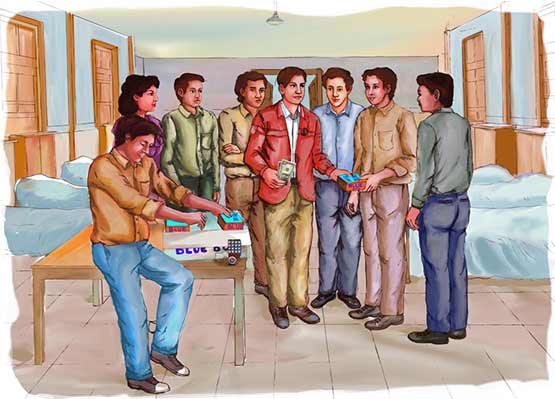 Wozniak even today finds it incredible. “I have never designed a circuit I was proud of” he said. What marked the beginning of the Apple was Steve’s idea: “the Blue Box; why don’t we make something out of it? How about building them and selling them?”
Wozniak even today finds it incredible. “I have never designed a circuit I was proud of” he said. What marked the beginning of the Apple was Steve’s idea: “the Blue Box; why don’t we make something out of it? How about building them and selling them?”
What Wozniak saw as an invention, Steve looked at it as a business opportunity. “Let’s sell these”, Steve said. Like the other phone phreaks such as “Captain Crunch”, Wozniak and Steve went by the pseudonym “Berkley Blues” and “Oaf Tobark” respectively.
They took the blue boxes to college dorms, gave strations and attracted good business. They sold these boxes for $150 to students and $300 to others. Concurrently, Wozniak was working on lowering the cost of the parts from $80 to $40. In one of the early joint ventures of Steve and Wozniak, the blue box can be said to be the early signs of Apple in the making. To put it in other words, the Apple came out of the box – the blue box.
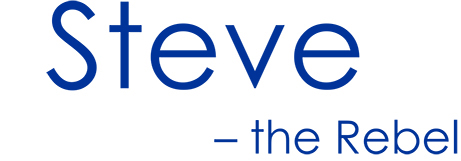
It was the year 1971 and the end of high school days for Steve was nearing. He began to display the traits of a rebel. He began to experiment with his eating patterns by taking up to fasting and compulsive diets. He would eat only fruits and vegetables. He had a tendency of having one or two foods occasionally, like carrot and apple for weeks at a time. Steve also spent some time as a fruitarian, which meant that he ate only fruits, nuts, vegetables and grains. He believed that his commitment to vegan diets would enable his body to flush out mucus and make him odour free. And consequently, he would not need to use a deodorant or shower daily. Yes, it is weird but true, the man who gave us Apple products wouldn’t bathe for days. Sometimes, he would turn to fasting for days to create a feeling of euphoria and ecstasy which according to the dieticians and food experts was – experiencing ketosis. It develops after a period of fasting and can create mild euphoria. There were times when Steve would have bizarre diets like ‘The Roman meals that would consist of whole-grain cereals topped with milk from campus cafeteria.’His girl friend, Chrisann Brennan, whom he had met in the same university he studied in, recalled, “He shuffled around and look half mad.” He was skinny , had shoulder-length hair, scraggly beard and to add to it was the odd mix of intensity and aloofness. He would stare at people without blinking and sometimes use long silences in his staccato burst of fast talking. At times, he would be all charismatic and at times, creepy. If that’s not all, then in one of his stress relieving acts, he would sit on the toilet tank with his feet in the bowl and flush it. Ewww…!!! Brennan recalls that when they were together, he was quite, shy and funny. He was a teenager who loved poetry, Dylan and strumming his guitar.
“He told me on our first date that he would be a millionaire someday and I believed him.” Brennan added, “Steve could see the future.”
The rebellious seventeen year old Steve never liked to follow instructions. According to him, instructions were meant for others, not for him. The school year ended and the summer of 1972 was here. After graduation, Steve announced to his parents, “I’m going to go live in a cabin with Chrisann.” His father got furious as they had already fought over marijuana, and to add to that he came up with something rebellious again. His father in reply said, “Over my dead body.” But Steve just said goodbye and walked out. The owner of the cabin initially turned him down, but Steve wasn’t the one who would take no for an answer and he kept trying. The landlord finally rented him the room.
Steve, Brennan, Wozniak and other friend learned through California’s De Anza community college bulletin board that the Westgate Shopping Center in San Jose was looking out for college students who could dress up in costumes and amuse the kids. For $3 an hour, Steve, Wozniak and Brennan dressed up in the costumes of characters of the famous fairy tale Alice in Wonderland. Brennan played Alice and the boys played Mad Hatter and White Rabbit in turns.
Wozniak found it to be fun but Steve didn’t; after all they were donning huge heads that reached to their knees and it was pretty stuffy inside. Recalling how annoying it was, Steve said, “It was hot, the costumes were heavy and after a while I felt like I wanted to smack some kids.”

When Steve was put up for adoption, his biological mother had taken a promise from Paul and Clara, his adoptive parents, to provide the boy with college education. So, they worked hard and saved for their son’s college fund. At first, the willful Steve toyed with the idea of not going to college at all. However, on his parents’ insistence, he applied only to Reed College, a private liberal arts school in Portland, Oregon. He had his own take on the schools in the neighborhood. He did not consider public university like Berkeley even though it was an affordable option and was also the school where his friend Wozniak studied. Nor did he look at Stanford College that was just up the road and the most popular option among his classmates. He could have easily earned a scholarship and enrolled at Stanford. He said, “The kids who went to Stanford, they knew what they wanted to do.” Steve wanted something more artistic and interesting.
Reeds, compared to Homestead High, was a small set up. With only one thousand students, it was half the number of students at Homestead. Reeds had the reputation of attracting free thinkers and seekers. Steve was all set to get into Reed. But the tuition fee and school fee was more than his parents’ affordability. “Steve said that it was the only college he wanted to go to,” Steve’s mother recollects. Finally, his parents gave in and managed to arrange the money for his first semester.
The Jobs’ like any supportive parents were excited about their son’s college education. They drove him up to Portland. But after reaching the campus, Steve behaved in an irritable manner and spoke sharply. Neither did he let them come on campus nor did he say goodbye or thank you. While telling his biographer, he said that he recounted the moment later with utter regret. “It’s one of the things in life I really feel ashamed about. I was not very sensitive, and I hurt their feelings. I shouldn’t have. They had done so much to make sure I got there, but I just didn’t want them around. I didn’t want anyone to know I had parents. I wanted to be like an orphan who had bummed around the country on trains and just arrived out of nowhere, with no roots, no connections, no background.”
Here at Reed, Steve was all out to have an unusual college experience. He had expected a looser culture, whereas Reeds had demanding academic standards. The freshmen here were required to go through a serious reading list in the first semester. He would bitterly complain to his friend Wozniak, “They are making me take all these courses.” Steve always did what he wanted. With the idea to meet girls, he signed up for dance classes.
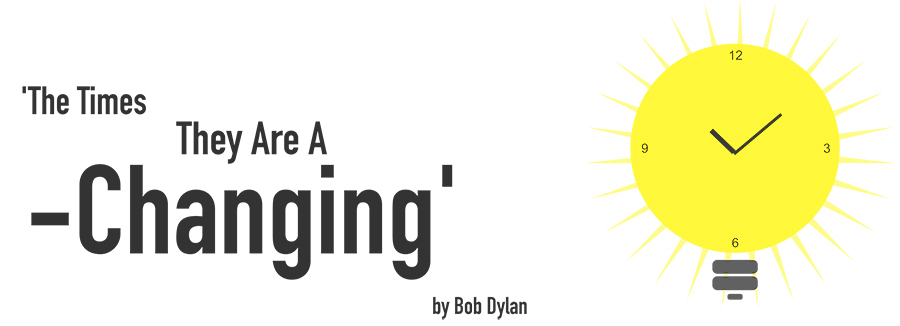
The popular track ‘The Times They Are A-Changing’ sung by Steve and Wozniak’s favorite singer Bob Dylan was out in the market. It was Dylan’s third studio album. Much to the times of late 1972, there was a fundamental change taking place in the American campus life. The country was involved in the Vietnam War, political activities at colleges retreated and many late night dorm conversations were replaced by an interest in inward fulfillment.
With ‘the times they are a-changing’, Steve found himself in the alleys of spiritualism. He was into spirituality and enlightenment in a big way. He would read lot into spiritualism and was impressed by Baba Ram Dass’ Be Here Now, a guide to meditation and the wonders of psychedelic drugs ( a chemical substance that crosses the blood–brain barrier and acts primarily upon the central nervous system where it affects brain function, resulting in alterations in perception, mood, consciousness, cognition and behavior).
The week after Steve arrived at Reed, he met Daniel Kottke. The two of them connected well because of the common denominator – Zen ( a Japanese school of Buddhism emphasizing the value of meditation and intuition rather than ritual worship or study of scriptures), Bob Dylan and Acid –that they shared. Besides this, they practiced meditation and read the book “Diet for a Small Planet” written by Francis Moore Lappe in 1971. They became committed vegetarians. Steve began spending much of his time with Kottke and his girlfriend Elizabeth Holmes. They hitchhiked to the coast, attended love festivals at the local Hare Krishna temple and went to Zen center for free vegetarian meals. Steve would share with Kottke his reading list on Zen books and enjoy playing a nineteenth-century German variant of chess called Kriegspiel.
Another friend which Steve made at Reed was the charismatic Robert Friedland. He was the campus leader and a salesman. He was behind the bars for two years for possession of LSD. Steve was enthralled by this campus leader who was four years elder to him. Like Steve, Friedland too was into Zen. The Zen triangle was now made up of Steve, Kottke and Friedland. The three of them were deeply into eastern spirituality. During the summer of 1973, Friedland travelled to India to meet Ram Dass’ Hindu guru – Neem Karoli Baba. When he returned in the fall, he took a spiritual name and walked around in sandals and Indian robes. Steve was entranced by Friedland’s conviction and it made him believe that the state of enlightenment truly existed and was attainable. “He turned me on to a different level of consciousnes” , Steve said. According to Kottke, Friedland had influenced Steve to a great extent. He recalled, “When I first met Steve he was shy and self effacing, a very private guy. I think Robert taught him a lot about selling, about coming out of his shell, opening up and taking charge of situation.” Friedland had this inescapable aura. “He would walk into a room and you would instantly notice him. Steve was absolute opposite when he came to Reed. After he spent time with Robert, some of it started to rub off.”
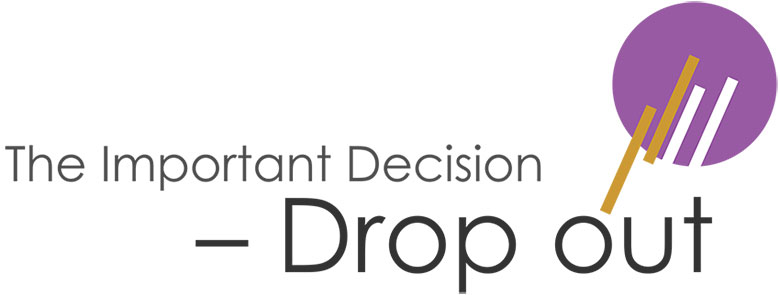
During the school days, it was difficult to keep Steve interested all the time. This problem persisted even in the college days. At Reed, Steve would enjoy dance classes and meeting girls, but wouldn’t like to attend classes he was assigned to. As a result, his grades weren’t good and his parents weren’t happy with him. They spent so much money on his education but did not find its returns worthwhile. Steve felt guilty about the whole thing and said, “All of my working-class parents’ savings were being spent on my college tuition.” After weighing the situation, Steve felt lost and decided to drop out.
Talking about this decision in his famous commencement speech at Stanford, he said, “I had no idea what I wanted to do with my life and no idea how college was going to help me figure it out. And here I was spending all of the money my parents had saved their entire life. So I decided to drop out and trust in myself, that it would work out okay.” In retrospect, he added further, “it was one of the best decisions I ever made.”
After dropping out what next? “The minute I dropped out I could stop taking the required classes that didn’t interest me, and begin dropping in on the ones that looked interesting”, Steve said. It was the calligraphy class that caught his interest. He liked the posters on campus and saw something that others didn’t. “I learned about serif and sans serif typefaces, about varying the amount of space between different letter combinations, about what makes great typography great. It was beautiful, historical, artistically subtle in a way that science can’t capture, and I found it fascinating.” The calligraphy course had a significant impact on the products he later created. “If I had never dropped in on that single course in college, the Mac would have never had multiple typefaces or proportionally spaced fonts.” Steve believed in the intersection of the arts and technology. In all of his products, he would wrap his technology under great design, elegance and human touch.
The idea of dropping out implied discontinuation of paying for tuition and classes that didn’t interest him. Interestingly, he impressed the Dean of students with his “inquiring mind”, good enough to be allowed to hang around and attend classes in Reed. Now that he was not paying for dorm, he had to sleep on the floor of a friend’s room or find empty rooms which the other disentranced students used to occupy. He would collect soft drink bottles for nickel deposit and buy food with that money. Every Sunday night, he would walk seven miles across town to get one good meal at the Hare Krishna temple.

After hanging around in Reed for eighteen months, in February 1974, at the age of nineteen, Steve decided to move back to his parents’ home and look for a job. In a classified section of the paper San Jose Mercury, under ‘technology help-wanted’ ads, an ad read: “have fun and make money.” It was for an early maker of video games – Atari. Their first product and the first real video arcade game – Ping-Pong was introduced in 1972 and they were looking for technicians.
Atari’s chief engineer Al Alcorn recalls, Steve arrived in the Atari lobby wearing sandals, unkempt hair and attire. “I was told, ‘We’ve got a hippie kid in the lobby. He says he’s not going to leave until we hire him. Should we call the cops or let him in?’ I said bring him on in!” Alcorn introduced Steve to Don Lang, a straight-laced engineer with whom Steve had to work. However, Steve’s body odour was so disturbing that he was shifted to night duty.
At Atari, Steve did his bit of improving some of the games and coming up with interesting designs. Just after a few months, he told the bosses that he planned to quit and go to India. Despite considering Steve’s efforts, the company was not interested in paying for his trip. However, Alcorn came up with a partway. Atari Germany was having a technical problem that the German distributors could not fix. The partway was that Steve was sent to Germany to fix the problem and from there he could travel to India. Steve went to Germany, and along with him went his prickly nature and odd smell about which the German staff duly complained. After he was done, he stopped in Zurich, Switzerland and finally landed in India.
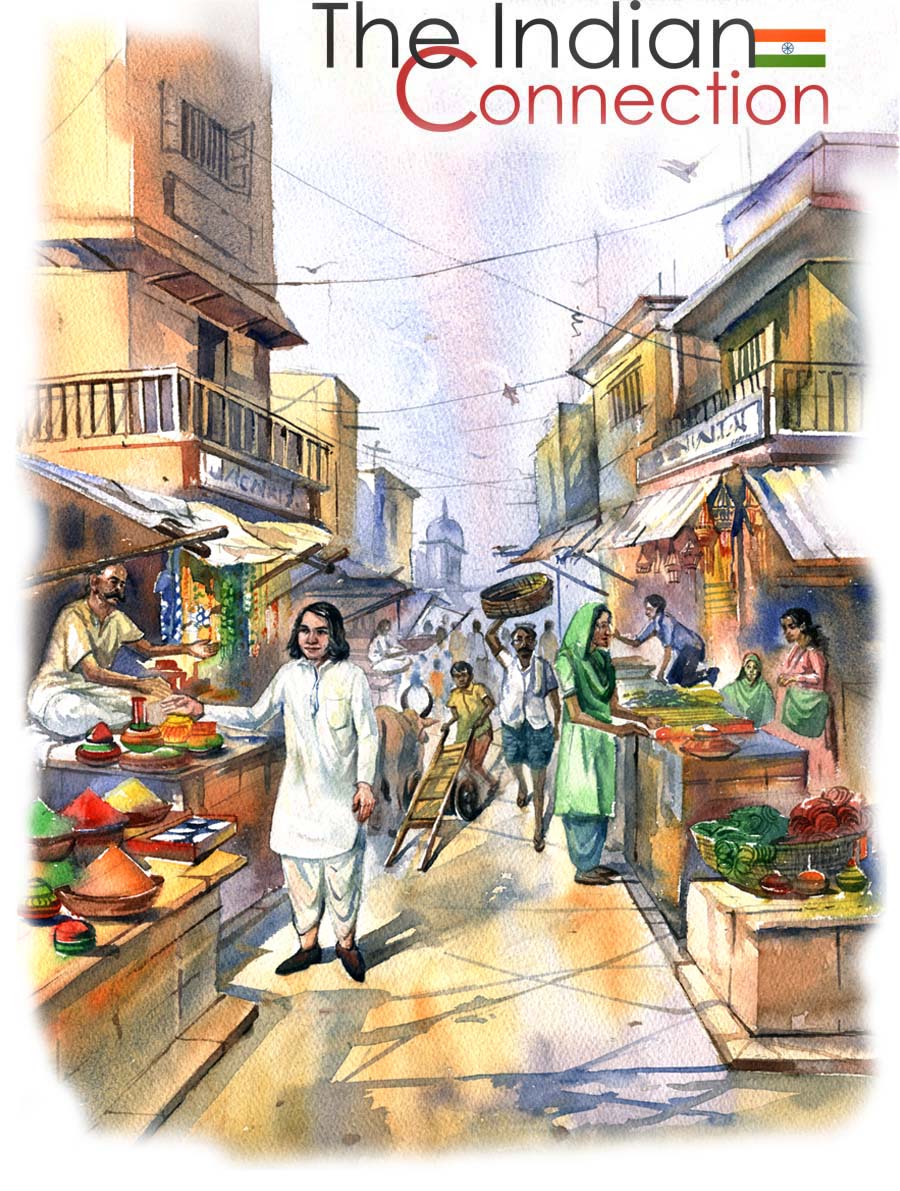
Steve reached New Delhi, India in April 1974. It was summer time and the soaring heat could drive anyone crazy. He went looking for the hotel he was told about, but much to his dismay, the accommodation at the hotel was full. In a bid to get some baksheesh, the driver got Steve’s accommodation done in one of the hotels he knew. In order to quench his thirst, Steve asked the hotel owner whether the water was safe to drink. On getting an affirmative reply, the naïve Steve believed him! What do you think must have happened? “I got dysentery pretty fast. I was sick, really sick, a really high fever. I dropped from 160 pounds to 120 in about a week”, Steve said. Once he felt better, he headed to a small town Haridwar, in western India near the river Ganges. Around that time of the year, one of the largest religious festivals ‘Kumbh Mela’ was being held there. More than ten million people poured into a town that usually accommodated fewer than 100, 000 residents. “There were holy men all around. Tents with this teacher and that teacher. There were people riding elephants you name it. I was there for a few days, but I decided that I needed to get out of there too.” Steve was out in the crowd. He recalled, “I could smell good food. I hadn’t been fortunate enough to smell good food for a long time, so I wandered up to pay my respects and have some lunch.” While Steve was eating, a holy man of the festival spotted him.
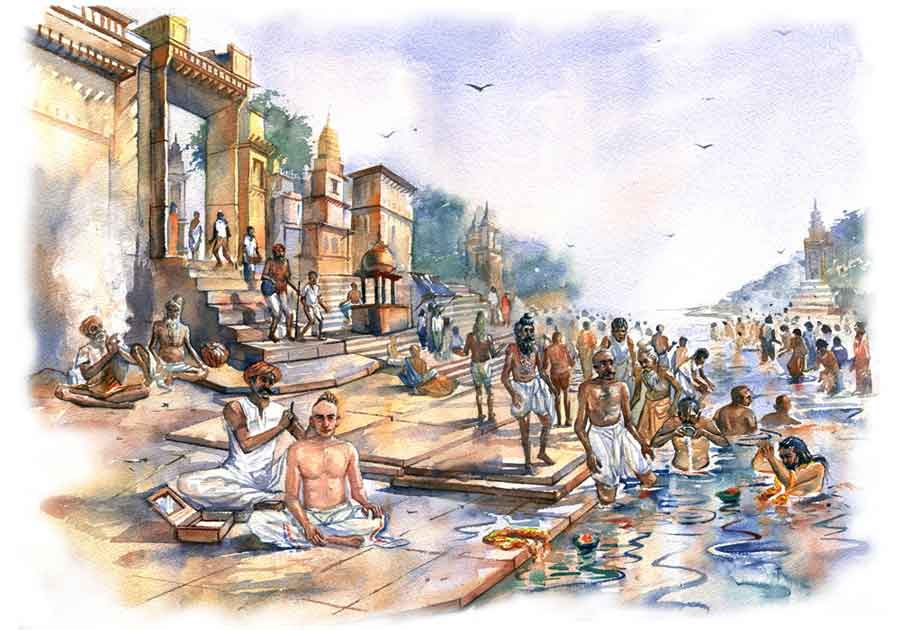
He came and sat next to Steve and started laughing. He grabbed Steve’s arm and led him up to a mountain trail to an area with a well and a small pond. What next? He dunked Steve’s head in water, pulled out a razor and shaved off his head. The holy man said that it was for his good health.
During the Indian sojourn, Steve’s friend – Kottke who was also into Zen Buddhism, joined Steve. Apparently, in an act of serendipity, where they were searching for a deeper spiritual awareness, they were struck by the pictures of poverty and religious holiness within the same frame. Steve and Kottke together were out to pay visit to a guru that Friedland had spoken about – Neem Karoli Baba. But unfortunately, the year before, Baba had passed away and his followers were scattered with plastic religious trinkets. Years later, while talking about his experience in India, Steve said: “Coming back to America was, for me, much more of a cultural shock than going to India. The people in the Indian countryside don’t use their intellect like we do, they use their intuition instead, and their intuition is far more developed than in the rest of the world. Intuition is a very powerful thing, more powerful than intellect, in my opinion. That’s had a big impact on my work.
Western rational thought is not an innate human characteristic; it is learned and is the great achievement of Western civilization. In the villages of India, they never learned it. They learned something else, which is in some ways just as valuable but in other ways is not. That’s the power of intuition and experiential wisdom.
Coming back after seven months in Indian villages, I saw the craziness of the Western world as well as its capacity for rational thought. If you try to calm it, it only makes it worse, but over times it odes calm and when it does, there’s room to hear more subtle things – that’s when your intuition starts to blossom and you start to see things more clearly and be in the present more. Your mind just slows down, and you see a tremendous expanse in the moment. You see so much more than you could see before. It’s a discipline; you have to practice.” After seven months of stay in India, Steve and Kottke returned home to Oakland. As Steve would write sporadically to his parents, they were happy that morning when they received the message to come and pick him. Steve recalled, “My head was shaved, I was wearing Indian cotton robes, and my skin had turned a deep chocolate brown-red from the sun.”
Once Steve was back, he started dabbling between – working at Atari, auditing a Stanford Physics class and studying at a local Zen center. With his college friends, he would periodically stay and work at Friedland’s farm – ‘All One Farm’.
In the compulsive feeling of self-awareness, he enrolled for primal scream therapy. The therapy was based on the Freudian theory that psychological problems are caused by repressed pains of childhood. Arthur Janov, who developed the therapy, argues that these problems can be resolved by re-suffering these primal moments while fully expressing the pain sometimes in screams. Steve paid $1,000 for a twelve-week course but it did not help.

In the summer of 1975, Steve rejoined Atari as a consultant. Nolan Bushnell, the founder of Atari, asked him to design a game called Breakout in which the players could destroy a brick wall with a bouncing ball.
In those days, games were written into the chips and not as separate software or apps. The challenge for Steve was to enhance the game’s speed in just four days using as few chips as possible in the design. Steve approached Wozniak for this and promised him he would split the $700 he was offered. Wozniak worked through the nights and finally built the game with fewer chips, within stipulated number of days. Nolan was very happy with Steve and paid him a bonus of $5,000. However, Steve paid Wozniak just the $350.
Wozniak learned about the bonus amount, years later, after Apple was founded. He read it in the book that Atari had printed on its ten years completion. In the book, Nolan had mentioned about the bonus under the company’s history section. After reading this, Wozniak was truly hurt and felt betrayed. When Steve was confronted about this episode, he called up Wozniak and told him he did not recall of receiving any such amount.
Popular Electronics, the famous magazine, created a buzz in the circle of hobbyist, hackers and electronic engineers with its January 1975 issue. The cover page broke with the title: “World’s First Minicomputer Kit to Rival Commercial Models… ALTAIR 8800” Apparently, the Altair was similar to Wozniak’s Cream Soda Computer. However, it took hours to assemble and didn’t work well enough. Boring thing about Altair was that it did not come with accessories; there was no keyboard, no screen and no interactive format. The engineers would write the program on the chip and the light in the front of Altair would blink.
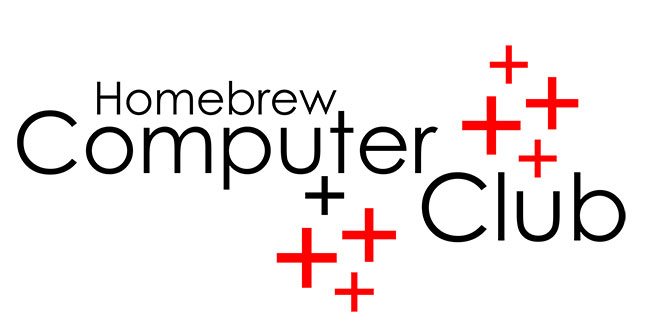
A group of engineers, hobbyists, electronic freaks and hackers would occasionally meet on Wednesdays. They would discuss news and latest buzz in the world of electronics. Wozniak, along with Allen Baum had attended the gathering. The best thing about that evening was – the stration of Altair that was arranged for. However, Wozniak was more interested in the specifications of the microprocessor.
Wozniak clearly recalls, “That night turned out to be one of the most important nights of my life.” After learning about the specifications of Altair 8080, he understood the working of the microprocessor. He said, “This whole vision of a personal computer just popped into my head. That night, I started to sketch out on paper what would later become known as the Apple I.”
Wozniak did not take much time to materialize what he had envisioned. In an arrangement of few electronic components that later got to be known as Apple I, he assembled together a power supply, a keyboard and a monitor. And now, for the first time you could see the output on the monitor.
If it was in Wozniak’s hands to make something out of this design, he would have gone ahead sharing the design and details with the club. Here is where Steve’s acumen came into picture. Steve stopped Wozniak from sharing the details of the computer with the club. Instead, during one of the club meets, he came up with a proposal. They would sell printed circuit boards to the members and all they would have to do was plug in their own chips and run programs. This seemed to be a simpler option than designing boards themselves. Initially, Wozniak was skeptical about the whole idea. He was doubtful whether people would care to buy these circuits. Also, he was worried whether they could even earn the cost incurred on each piece. However, a confident Steve said, “Well, even if we lose our money, we’ll have a company.”

The duo decided to build a company. “We’ll have a company,” easier said than done. The ‘Steves’ – Steve Wozniak and Steve Jobs began to pull in resources for initial investment. They sold stuff they owned. Wozniak sold his $500 worth H-P calculator for which he got almost half the price. Steve had a red-and-white Volkswagen bus which fetched him $1,500. But as misfortune would have it, the buyer of the bus came back complaining about the engine, to which Steve agreed to pay half of the repair cost. Finally, together they managed to pull in $1,300.
Now, the initial investment was in place and all that the partnership needed was a name. Around those days, Steve had gone to visit the Friedland’s ‘All One Farm’ where he worked on an apple orchard. On his return, when Wozniak went to pick Steve up, they dabbled between some names, mainly some tech names. Apparently, in those days, Steve was on a fruitarian diet; just out of one of the prominent things on his mind, he came up with the name Apple – Apple Computers. Instantly, one advantage they could see with this name was, that it would feature on the top of any alphabetical company listings.
What did the Apple I look like? Wozniak had built a new circuit board and used an inexpensive microprocessor instead of the Intel 8080. With eight kilobytes memory, the computer had the BASIC version written by Wozniak and a keyboard. Having a keyboard for the computer made writing programs on to the chip easier than the Altair.
Steve roped in Ron Wayne, his former boss at Atari to create a logo for Apple Computer. Wayne came up with an image of Newton sitting under a tree and the apple glowing over his head. On one hand, Wozniak along with Steve was setting up a company, on the other, he was associated with HP. Wozniak was caught in work ethics dilemma. He was wondering how to delineate his process of ideation! He was finding it difficult to avoid mixing his Apple ideas with HP and vice versa. Thus, in a vindictive move, Woz showed his computer to the officials at HP. What their eyes could see, their imaginations couldn’t and they told Woz that they were not interested.
With Steve and Wozniak into the partnership, they started looking for a third partner to play the role of a tie-breaker. They made Ron Wayne the third partner, giving him 10 per cent stake in the business, leaving Steve and Wozniak with 45% each. So, finally on 1st April , 1976, Apple Computers was officially created. Wayne, who had a series of business failures earlier in life , wasn’t sure this would work and therefore, he pulled out of the agreement and moved on.
Back to ‘Two is a Company’ – Steve and Wozniak. Building a company is never easy, especially when you do not have strong financial backing. However, if you have the right attitude then nothing is impossible.
At the Homebrew Club meet Steve made an impressive presentation of Apple I. He showed how Apple I was better than Altair. Somehow, people didn’t get it. However, when the audience left, there was one person who was impressed by Steve’s presentation, Paul Terrell. Terrell had a computer store - the Byte Shop. After the presentation he went up to Steve and Wozniak and handed over his business card saying, “Keep in touch.”
Steve, like any start-up entrepreneur was the last person to miss out on a business opportunity hidden in the words “Keep in touch.” He walked into the Byte Shop barefooted and met Terrell. Terrell was looking for fully built computers and not just circuit board like the ones that Wozniak and Steve were building. Terrell wanted a complete unit. He didn’t want the customer to take the trouble of buying the circuit board and then looking out for other parts. So he told Steve that if he could build 50 units at $500 each, the deal was on. Picture this: Steve’s eyes flashing dollar signs after calculating 50 units x $500 = $25,000.
The deal was made, but what about the initial money required for buying the parts? And the premises to build these computers? The solution came in the form of Allen Baum, the friend from Homestead High. His father agreed to help the duo with $5,000. But they needed more, say about additional $15,000. So, they went looking out for financial assistance, but hard luck! The banks said NO; people at Atari said NO; they tried asking some old parts store for credit, the answer was NO! Somehow, Steve convinced the manager of Cramer Electronics and he agreed to sell them parts on a thirty-day credit.
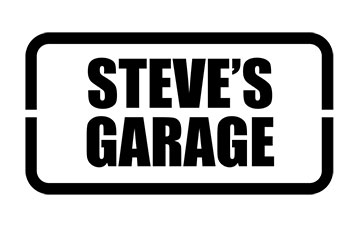
Bill Fernandez and Daniel Kottke joined Wozniak and Steve on this venture. In the beginning, the group worked at Steve’s house, but slowly it started getting crowded. Steve’s dad moved up the setting to their garage. He got them a phone line, plasterboard and added lighting. This was how the first fifty revolutionary products were built in a garage and delivered to the Byte Shop. The first fifty Apple I were dispatched to the Byte Shop, the next lot was sold to friends and now they were building hundred more for retail outlets.
Only in evolution lies the quotient of continuity. While Apple I was creating a buzz, Steve was already toying on the idea – Apple II, an integrated package. If Apple I was for hobbyist and geeks, then Apple II would be for people. This was the idea behind Apple II.
But big dreams need big bucks. To make the dream of Apple II come true, the duo needed more than $100,000. In Steve’s words, “Big thinkers often do big things. Small thinkers never do big things.” They approached Atari again, but this time, Atari was sold to Warner Communications. Although, Nolan Bushnell, the founder of Atari wasn’t interested in investing, he did one good thing, he directed Steve to Don Valentine, a venture capitalist. Sadly, things didn’t work out with Don Valentine as he found the youngsters naïve and lacking sense of market. However, he put them to another investor, A.C. “Mike” Markkula.
Like Don Valentine, Markkula dropped by to check what the youngsters were upto. The moment he saw the computer, he said, “It was what I had wanted since I left high school.” After that he met the duo couple of times, had some discussions and offered to guarantee a credit line of $ 250,000 to get them started on Apple II. Markkula was the one to take Apple to the next level. A former marketing manager for Intel, Markkula saw what Steve didn’t and was officially responsible for creating the Apple Computer Company in January 1977.
To complete the team, Makkrula got on board his old friend Mike Scott(director of manufacturing at National Semiconductor). With Scott’s arrival, Apple moved out of the garage. Now roles were defined and numbers on the payroll were out. Wozniak was number one, Steve number two and others followed. For Steve, the number two spot was upsetting. And in a typical Steve fashion, he got a badge with the number zero on it. However, on the payroll his number was still two. In times to come, Steve did not have a fine equation with Scott.
It was in the spring of 1977 that the West Coast held its first computer fair. And it was also the first time, Steve got himself a suit. At the fair, three impressive Apple II units were put on display and by the end of the fair the company took home orders for three hundred units. The sales graph was now slowly climbing north. More and more people outside Apple began to write programs and games that were compatible with Apple I & II.
Apple I and Apple II found great demand amongst gamers, hobbyists and common users. The part that got skipped was the business segment or computer for offices. In 1979, a program VisCalc the portmanteau of visible calculator was written for Apple supported calculations. This program added more utility to the computer. When a stock analyst at Morgan Stanley, Benjamin Rosen was shown in a how his calculations could be taken care of, he went “wow.” After that, the office working patterns were never the same.

The relationship between Steve and his girlfriend Brennan was on a ‘on-and-off basis’. Brennan took up a job at Apple and moved in with Steve. They were doing well together until she got pregnant. When Steve learnt about the pregnancy, he clearly denied that the child was his.
They say that history repeats itself! Both Steve and Brennan were twenty three when Brennan got pregnant; the same age that Steve’s biological mother too had got pregnant outside marriage. Feeling frustrated and broken, Brennan left for Friedland’s ‘All One Farm’. On 17th May, 1978, she gave birth to a baby girl. Steve went to visit the baby three days later. The child was named Lisa Nicole Brennan.
In a DNA test later, it was found that Steve was the father of the child. By now, Steve was doing well and Apple was worth millions of dollars. The County of San Mateo sued Steve for his irresponsible act and made him pay $385 a month in child support. Not only this, it also made him repay the county the welfare payments it had taken care of, an amount of $5,856.When in conversation with his biographer, Steve said: “I wish I had handled it differently, I could not see myself as a father then so I didn’t face up to it.”
Do you know?
Steve had a unique dress code. His signature wear was mock black turtlenecks, denim jeans and sneakers. In the early years of his career he was known to visit people barefoot, in unkempt hair, bearded face and a hippie look.

With Apple II doing good business, what could possibly be next in Steve’s mind? Apple III? Yes and No. Yes it was the next Apple, Apple III, but due to its design of a piggyback board with loose connectors, it flopped after the first shipment, in May 1980. So, Steve started working on another project named Lisa. He hired two engineers from HP to come up with a completely new computer. Lisa was a 16-bit microprocessor compared to Apple II’s 8-bit microprocessor. However, it couldn’t do anything much exciting and thus turned out to be a disappointment.
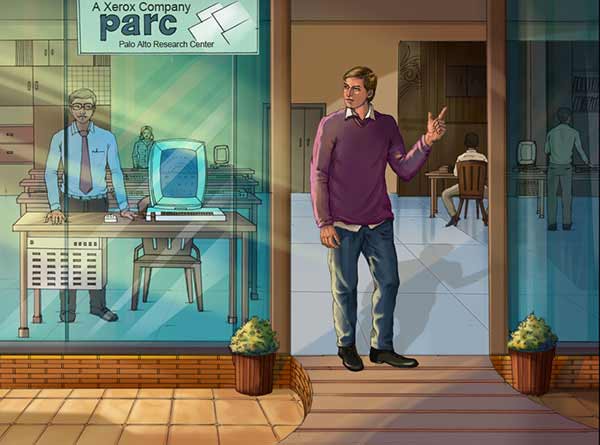
Now, action was happening elsewhere. It was at Xerox Corporation’s Palo Alto Research Center, better known as Xerox PARC. Here, they were using a pointing device, a small rolling rectangular box called a mouse. With the help of this rolling box, they could navigate around the screen. Besides, they used the Graphical User Interface to develop windows, menus, radio button, check boxes and icons. Bitmapping and Graphical User Interface were the highlighting features of Xerox’s PARC computers. The moment Steve saw this, he got ecstatic and said, “You’re sitting on a gold mine!” He saw what people at Xerox failed to see. Later, he incorporated these features and more in his project, Macintosh.
Around second half of 1980, Apple decided to go public as it was the best way to raise money and help the company grow. On December 12, 1980, Apple went public. The bankers had priced the stock at $22 a share which later that day shot up to $29. Steve was then only twenty-five and was 15% owner of a company worth $220 million.
By 1981, the enhanced version of Apple II was doing great business. It’s annual sales were recorded to be $335 million. On the other hand, Apple III and Lisa weren’t doing well. Amidst all the development, Scotty planned the reorganization of the company. He was made the Chairman and Steve was removed from the project Lisa. Now Steve would only be the face and voice of the company. This move caused a lot of pain to Steve.
Meanwhile, the manager of one of Apple’s publications department, Jef Rakin, envisioned an inexpensive machine that would sell for $1,000. To back up this concept, he came up with a five-inch screen and a very cheap microprocessor. Steve quite liked Rakin’s project as for him it was not the price but the making of an “insanely great” product that was important. He began interfering and dictating people around. Rakin could not take it and he fired a memo to the Apple president, calling Steve “a dreadful manager.” He also wrote that if the idea was good, Steve would tell people about it as though it was his own.
On the other hand, Scott too was having a tough time handling Steve. In an entry-exit move, Rakin left and Steve took over the Macintosh. Steve put up a team that worked on Macintosh. Working with Steve closely was not easy. The group had to put up with his hurtful criticism, arrogance and “reality distortion field.” Steve was known for getting things done his way, and Bud Tribble, a member of the Macintosh team named that trait as, “reality distortion field(RDF).” The term was taken from the popular television series Star Trek. RDF is said to distort an audience’s sense of proportion and scales of difficulties and make them believe that the task at hand is possible.
In other team member’s words, RDF was said to be “Steve Jobs’ ability to convince himself and others to believe almost anything with a mix of charm, charisma, bravado, hyperbole, marketing, appeasement and persistence.”
Macintosh was doing pretty well, but Steve was worried that the computer took a long time to boot up. The booting up time was later reduced and Macintosh( Mac) was now the first computer that wouldn’t have a floppy disk drive and fan. Steve made the Mac so compact that there was no room left to add memory. While there was much work happening on Mac, Apple Lisa was scheduled to be launched.
In September 1982, Apple sold seven hundred thousand computers. The $583 million sales got them in the Fortune 500 list of America’s largest companies. While all of this was happening, the market dynamics were changing. The computer giant, IBM, entered the desktop market and Microsoft announced that they would create an operating system for IBM computers.
In 1983, with much fanfare the Apple Lisa was introduced. This was the computer that was built after the visit to Xerox. Thus, you could see the GUI(Graphic user Interface) in this computer. Features such as a mouse, great memory and two floppy drives along with few easy-to-use programs were the hallmark of the new Apple offering. Steve was promoting this machine big time to the press. He did not leave the opportunity to talk about Apple’s next big thing on the way. However, Apple Lisa did not do well because of its high price. The year end of 1982 saw the exit of the president of Apple, Mike Markkula. In the spring of 1983, Sculley, the president of Pepsi-Cola division, filled in the top seat at Apple.
Sculley was a marketing guy and he joined Apple at a time when Macintosh was getting ready to hit the market. Sculley strategized a massive publicity for the launch of Macintosh. The year was 1984, the product: Macintosh, the event: Super Bowl XVIII, the venue: Tampa Stadium, Florida. The third quarter of the match ran the ad of Apple 1984. And the next day, you had the newspapers and magazines talk about the new computer in town – the Macintosh. About seventy thousand Macintosh were sold in hundred days which way surpassed the sale of IBM PCs.
Here, Mac was on a roll, there, Apple III and Lisa were struggling. And thus began the blame game. Sculley and Steve would have frequent arguments and heated discussions. Steve in one of his unblinking stares told Sculley that his presence was alarming for Apple and he was a wrong person to run the company. In his incisive way, Steve accused Sculley of failing to understand the product development process in computer business. The mudslinging was two ways. In return, Sculley called Steve a petulant brat. The tables had turned at Apple. Sculley was hired as the CEO and it was he who drew the reorganization plan. The board had given Sculley enough powers to run the ship. In a major shuffle plan, Steve was kicked out of Macintosh and Lisa division and was given the namesake tag “global visionary.” To make things worse, in one of the interviews, Sculley told a Wall Street analyst that there was no role either that day or in the future for Steve Jobs.
Things were unpleasant and Steve felt like the Shakespearean character Richard II( a king betrayed by his own people and sentenced to life imprisonment). He could slowly see the apple that he had taken a bite into, being taken away from him. By the end of 1985, began Steve’s journey – without Apple. Now, what NeXT?
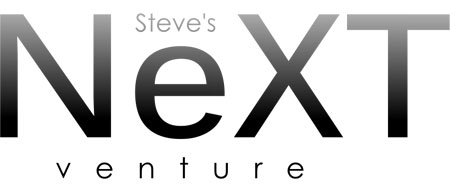
Steve, a born doer, turned the Apple leaf and started working on the idea of powerful computers. After making computers for the hobbyists, gamers, individuals and businessmen, the next market which he wanted to cater were the scientists. The scientists associated with universities, companies or working independently wanted to have a powerful computer that could empower their research with speed and accuracy. And Steve’s high end computer NeXT could do all of this.
After Apple, Steve decided to invest the amount he received from Apple in his next venture – NeXT. Steve was happy with Paul Rand’s work on the logo for his new venture NeXT. The e according to Rand could mean “education, excellence, expertise, exceptional, excitement, e=mc2.” NeXT was a new venture without any financial backing from any big name. It was around this time Mr. H. Ross Perot, the Texas computer billionaire saw a PSB television show on NeXT and called Steve to express his interest in the NeXT. Bill Gates and Steve had worked together on Mac, obviously in the software domain. On the NeXT venture, Steve wanted Gates to continue doing the same. Gates was pretty impressed by Mac, but when he saw the NeXT Workstation, he was upset. He not only called the machine crap but also pointed out the tardiness of the optical disk. It may sound rude but he told InfoWorld(Information Technology online media company), “Develop for it? I’ll piss on it.” Steve however was clear that NeXT was the next wave in computing, despite of what Gates had to say about the machine.
You may succeed in stopping the flow of running water, but Steve, no way! Steve went to IBM and gave them a of NeXT. What do you think might have happened? Yes, you are right, they were impressed. He showed them how the NeXTSTEP, an object oriented software development system worked. People at IBM were ready to license the current version of NeXTSTEP. If all went well, they were willing to use it on their workstations.
Finally, on 12th October, 1988, NeXT was launched in a theatrical fashion. While addressing the audience, Steve said that after three years of consulting with universities across the coordinates of the country, they realized that there was a need of a personal mainframe for the academicians, researchers and scientists. In his charismatic way, he said that events like this occur only once or twice in a decade. All this turned out to be ingratiating, for when the $6,500 price tagged machine was out for sale by mid-1989, it had a different story to tell. What supposedly was to sell as hot cakes – ten thousand machines in a month, in reality had only four hundred machines off the shelf.
When Steve was working at NeXT the workplace was closer to Chrisann Brennan, his girlfriend. He would visit her place to see her and their daughter Lisa. The father and daughter would go out for dinner, rollerblading and long walks. He would also take her to his office and soon, a fine bond began to develop between the two.

Pixar
George Lucas, the maker of Star Wars, had completed his first Star Wars movie and was looking to sell off his computer division of Lucasfilm. It was into making hardware and software for rendering digital images and also into animation. Now see how three dots connect. Dot one: Steve was interested in the animation business; Dot two: Alan Kay of Xerox PARC was friends with Steve; Dot three: Ed Catmull, friends with Alan Kay was the one calling shots at Lucasfilm’s computer division.
So, Alan Kay connected Steve with Catmull. Catmull along with his colleague Alvy Ray Smith met up with Steve. And the result of the synergy was that Graphic Group( then a computer division of Lucasfilm) came to be known as Pixar under the trio in 1986. From the $10 million that Steve brought in, $5 million was kept as capital and the rest of the amount was used to make the company a stand-alone one. Under the creative head of John Lasseter ,chief creative officer at Pixar and Walt Disney Animation Studios, the partnership took off with Toy Story and went ahead to make some of the finest and award winning movies in the world of animation and 3D.
By 1988, the animation division was doing well, but due to floundering performances of hardware and software sales, Pixar was soon running low on capital. It was soon learnt that to have the whole show running, an additional $300,000 was required. Weighing the options they had, Steve said he would provide the capital. That’s what leaders are all about – they rise to the occasion and show what they are made of. Hence, it did not come as a surprise when in 1989, Inc magazine declared Steve Jobs as the Entrepreneur of the decade. A title well-earned, a title well deserved!
At Disney, the CEO, Michael Eisner and his colleague Jeffery Katzenberg were very impressed by John Lasseter’s work in the movie ‘Tin Toy’ and wanted him to work for Disney. But in every sense of the word ‘gratitude,’ Lasseter was clear about what Steve and Pixar was to him. Disney and Pixar got talking and finally a deal was struck in May 1991 between the two. As per the deal, Disney would own the picture, its characters and also have control over the creative process. Toy Story was Pixar’s baby, conceived and developed by Pixar’s John Lasseter; however, the creative control was with Disney and as a result, there arose creative differences over characters’ portrayal. By November 1993, the first half of the movie was ready. In the process of making the movie, Steve could see one thing clearly : in future projects, Pixar had to get its own funding. The release of the movie was scheduled for November 1995, and around that time Pixar also planned to go public. Come Thanksgiving Day 1995, Toy Story hit the screens and the result was record breaking. Toy Story touched the highest collection for the year. It broke the records of Batman Forever and Apollo 13.
The outcome of the success of the movie was also reflected in Pixar’s stock prices that opened in 1995 at $22 and closed at a whooping $39.
Do you know?
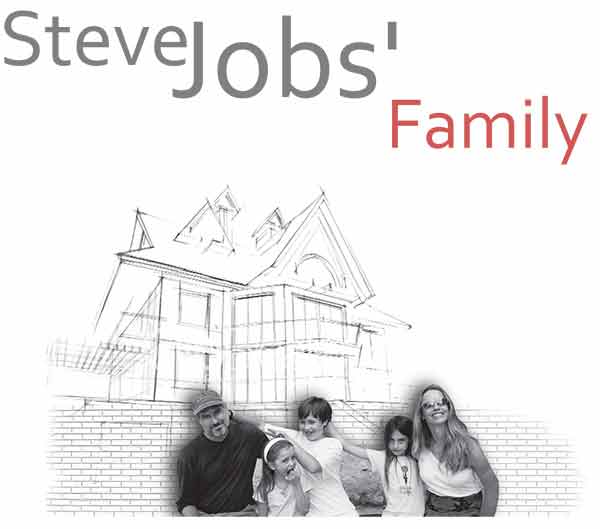
In the Post-Apple world when Steve was busy building NeXT and Pixar, his mother, Clara Steve was diagnosed with lung cancer. She was sixty-two when she died in November 1986. During the last days, in one of the visits, Steve learnt that she was married before meeting his father, Paul. But as her husband had not returned from the war, she had preferred not to mention it. She also told him a few things about his biological parents. Not until his mother died did Steve express an interest in learning more about his biological parents. After her death, Steve confided in his father that he would like to find his biological parents. His father did not stop him. Steve hired detective services and was able to track down his mother and sister. He got along very well with his sister, Mona Simpson. In fact, she became a good friend of Steve.
In late 1989, during one of the lectures that Steve gave at Stanford Business School, he met his life partner Laurene Powell. It was quite an interesting episode. Steve was at the business school to deliver a lecture. Powell with her friend arrived late and sat in the aisle. One of the ushers asked them to move; seeing the front seats vacant, Powell with her friend, went ahead and occupied them. Apparently, it happened to be next to the speaker Steve Jobs’ seat. They got talking and before Steve could let go of this opportunity, they were in a relationship.
His relationship with Powell started developing pretty well and during this period she got pregnant. Steve for the second time, was facing problem of confronting the option: marriage. Finally, on 18th March, 1991, Steve married Powell according to the Zen practice, performed by a Zen Buddhist monk Kobun Chino Otogawa.
Laurene Powell, daughter of Marine Corps pilot was originally from New Jersey. As she had lost her father in a crash and her mother’s second marriage was a disappointment, she grew up to be a resilient and self-sufficient girl. Before she joined the business school, she worked at Gold Sachs.
Much before the marriage, Lisa, Steve’s daughter with Brennan, moved into his country house Palo Alto and stayed with Steve throughout her high school years. She later moved to Harvard. In times to come, Palo Alto housed Steve’s entire family, his three kids from Powell, Lisa and his sister Mona Simpson. At home, he was a loving father and a great husband. It was through his sister Mona that Steve learned about his father’s whereabouts. However, as Steve was not keen on meeting his father, nothing much could develop between the two.
In September 1991, Steve had a new member join the family. Laurene delivered a baby boy who was named Reed Paul Steve. As Steve Jr. was growing, his grandfather bid adieu to the family in March 1993.
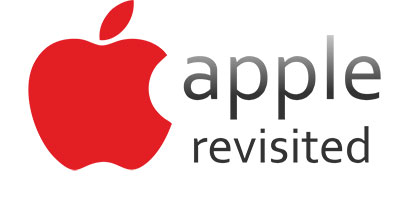
NeXT Workstation was a personal mainframe and a high edition computer for researchers and scientists. This apparently was incompatible with other computers and did not support the prevalent standard operating systems and software apps. The software which was compatible with this machine was NeXTSTEP. The only company that was building such workstations and was by-and-far a leader, was Sun Microsystems. Things started to look better when Intel agreed to have NeXTSTEP on the IBM/Intel platform.
While Steve was busy with his NeXT serve, Apple was still milking on the innovations that Steve had left Apple with. For Sculley, it was always about the profit margin and market share. Somewhere in the pursuit of making affordable products and gaining market share, Apple was losing its charm. It now seemed to be similar to the story of the hare and the tortoise, the part when the hare falls asleep and the tortoise takes him over. Apple seemed to have slept with no innovations and nothing new on card while Microsoft marched ahead with their product sales.
There were lot of talks going on in the background. Upside: there were talks going on between Steve’s friend and chairman of Oracle, Larry Ellison on Steve’s prospects of restoring Apple’s charm. Downside: Michael Spindler, the man who replaced Sculley in June 1993 was up to selling Apple to Sun, IBM and HP.
Michael Spindler was replaced by Gil Amelio who was one of the guys on the I-hate-Steve list. Steve approached Amelio over joining Apple but things did not go well. Later in 1996, when Amelio realized that Apple’s new operating system Copland wasn’t living up to their expectations, he thought that the most sensible thing would be to bring in the Superman – Steve Jobs. In a very calculated move, Apple bought NeXT for $427 million in late 1996. With NeXT came the NeXTSTEP, which later on went to become Mac OS. As a part of this move, Steve Jobs was named the interim CEO of Apple.
Once Amelio was out, Steve called up Gates but was not sure from where to begin. To state the exact words, Steve told Gates, “I need help.” What can be seen as vouching-for-Apple’s credibility, Microsoft made a tiny investment in the company. Steve was looking for ways to reinforce the brand Apple, so he called up the advertising team that had worked on the 1984 campaign. Thus, “Think Different” campaign was launched.
For Steve, innovation was the only way to grow, as he did not believe in existing, but in growing. He called in for Joanathan Ive, Apple’s top designer, to come up with new design for the new Macintosh. The new Macintosh was named iMac. The ‘i’ in iMac stood for: individual, instruct, inform and inspire. The new Macintosh was the beginning of revolution in the domain of personal computers. Its design skipped the need of floppy disk drive, introduced a tray that popped out and had a new improved operating system. In May 1998, Steve unveiled the iMac and in the same year, his youngest child, Eve was born. It was not even six weeks since the launch of iMac and three hundred thousand iMacs were already sold. With the success of iMac, Apple was on a roll. In mid-1999, the carpet was rolled out for iBooks, the candy-colored laptops. Now that things were falling into place, Steve contemplated on dropping the word “interim” from his title CEO. At the 2000 Macworld Expo, Steve announced that he was now the permanent CEO. Considering the success of iMac, he preferred keeping it as iCEO. Like any business, Apple too wasn’t free from ups and downs.It’s Apple Power Mac G4 Cube(an entirely new class of computing designed to deliver big performance) introduced in summer 2000 was shown thumbs down because of high price tag.
Steve wanted to take Apple into a new business and the domain he was toying with, was Retail. He got in touch with Gap’s president, Millard “Mickey” Drexler and asked him to come on board to work on the same. Apple had a proud product line, and going retail would add value to the business. Mickey knew the man who could give physicality to the idea. He roped in Ron Johnson from Target Chain to design the Apple store. And by the spring of 2001, Apple had opened two retail outlets, one in Virginia and another in California.

The dot com bust in the year 2001 and the plummeting tech stocks brought a lull in the market. It was the time when Steve started working on a new grand strategy – the digital hub. Way back in 1990s, Apple had developed a technology called FireWire. It used a high-speed serial port that could transfer digital files from one device to another. A Japanese camcorder company applied this technology to transfer videos and picture files. Steve’s idea of digital hub was to have as many devices connected to the personal computers as possible. This would not only increase the utility of the computer but also serve the multi-purpose requirements of the consumer.
The iMac that was out in 1999 had the FireWire feature. In what was to be a part of the hub, the iMac came up with newer applications to edit photo and video, to create and mix music and to burn music on a disc. Around that time, Apple was working on music-management application – iTunes. It was being created to manage music and help you have a customized playlist.
Will you believe this – the most phenomenal phase in the history of music was the early 2000s. People would download free music from sharing sites like Napster and burn them onto their blank CDs. And there was a time when the number of CDs burned in America was more than the number of people living there. Watching this trend, Steve added a CD burner to the Mac.
Steve, along with Jeff Robbin and Dave Heller( both Apple engineers) worked on the music management software. He made sure that iTunes offered a text box that would help you search for the artist, track or album. All that you had to do was just type in the text box and manage your music. The iTunes was launched in January 2001 and was initially offered to the Mac users only. Considering the overwhelming success, it was later made available to non-Mac users too.

What could be seen as an extension of Apple were basically the elements of the hub. The iTunes team was working on a portable device to store and play music. In one of the initial attempts, only sixteen songs could be stored on it and it’s functionality was unclear. One of the iTunes team members – Jon Rubinstein who would make regular visits to Japan, learned about an 1.8 inch drive with storage capacity of five gigabytes built by the engineers at Toshiba. Bingo! Rubinstein with a poker face picked up the drive and left for US. With this drive, the storage problem was taken care of.
What about human interface? Phil Schiller, another team member, came up with the idea of a navigating wheel with a button in the centre and thats how the iPod was built . In October 2001, the $399 priced pocket music device – the iPod ,was unveiled. The best thing about this device was that you could enjoy your music on the go. Say, “Bye-bye walkman. Hello iPod.”
Soon the walkmans were going to be replaced by iPods, but the music industry still had to find a way out of piracy. In such times, Steve worked on the idea of iTunes Store. The concept of iTunes Store helped the music industry battle out the piracy threat. Music lovers could now buy their music online. But the music magnates were not happy with two things. One, the user need not buy the complete album even if there were only one or two of his favourite tracks on it; Two, the tracks were priced only 99 cents. Steve knew the only way to stop piracy was by offering lucrative options to the users. He began talks with five major record companies and also spoke to some of his friends in the music industry. As you know, it’s never easy to get people be a part of change. But the charismatic, determined and visionary Steve finally did it. With 200,000 tracks in the new music store, the iTunes Store was launched on April 28, 2003. Steve was no less than the ‘Pied Piper of Hamlin’, he launched the iTunes Store and within six days, the iTunes store had sold over a million songs.
The iPods were selling like hot cakes and by 2005, a smacking twenty million pieces had been sold. The camera business was now being decimated as the cell phones came along with a built-in camera. Cell phones were a booming market. The mobile phone giant, Motorola, had a popular model RAZR that became a hit because it was a phone equipped with camera. It was cute enough to have an iPod in it and what you would have is a three-in-one device in hand.

Steve, along with the CEO of Motorola, worked on the project that merged the portable music player into the phone. Moto’s RAZR could do both, be a phone and a music player as well. But Steve wasn’t happy with the way people at Moto worked and thus, he decided to get this worked out more aesthetically at Apple. Steve had an eye on the phone market and knew this was the next gadget to drive the world, so he came up with iPhone. In January 2007 Macworld Expo, Steve launched the iPhone, the second most revolutionary product that changed the world, first being the iPod. In 2009, the Fortune magazine named Steve, “CEO of the Decade.” Now, recognition, accolades and appreciation were pouring in from all sides. After all, he was making “insanely great” products.
Do you know?
Before Steve could come up with the iPhone, he had started working on the tablet PC, the iPad?

Steve went to attend the fiftieth birthday party of an engineer friend who worked at Microsoft. The birthday boy was one of the team members working on the Microsoft tablet PC. And during the party he kept talking about the tablet PC which kind of irked Steve. The next day at work, Steve got a team together to work on a tablet PC that would have a touch screen and could be operated by finger and not a stylus.
In January 2010, the third revolutionary product that changed the world was launched, the iPad. It was a sleek device with features such as touch screen, internet surfing, watching videos, listening to music and reading e-books. With a product line that has iPod, iPhone and iPad, Steve Jobs’ Apple became the third Apple to change the world.

It was in October 2003 that Steve was diagnosed with cancer. However, it all began when he was managing portfolios at Apple and Pixar. Around late 1990s, the time when Steve was busy restoring Apple, his health began to show early signs of what it would later develop to be, pancreatic cancer. Steve knew he did not have much time and he had to do all that he had planned.
At the initial stage of pain, Steve would visit the urologist and take a shot of narcotic pain killer. But five years later, in 2003, his new scan had a different story to tell. The scan showed something on his pancreas. After certain tests and scans, the doctors established that they had found a tumour. To stop the cancer from spreading, the doctors advised Steve to undergo a surgery. Undergoing a surgery meant removing the tumour and tissues around it. It also meant realigning the digestive tract. Steve thought he would maintain an aggressive diet and alternative treatments. But things only got worse and in a scan taken a year later in 2004, it was found that the tumour had not only increased in size but had also spread in the body. Steve finally consented to be operated on. The operation was followed by the much obvious chemotherapy. For a person like Steve, missing on to the action was the last thing he would like. The next day after the operation, he emailed his colleagues that he would be back soon. It is said, that had Steve been operated in the early stage, he would have been around for a longer time.
In 2009, Steve called the managing editor of TIME magazine, Walter Isaacson to pen his biography. Walter Isaacson had already written the biographies of Henry Kissinger, Albert Einstein and Benjamin Franklin. Oblivious to the reason behind the call, Isaacson said that it was too early to write a biography. Later when he met with Steve he learnt about the cancer.
When the iPhone/iPad/iPod is low on battery, it displays the icon ‘low battery’; so was Steve’s health –‘ battery low’. Finally, surrounded by his near ones in his house, Steve breathed his last with the words, “OH WOW. OH WOW. OH WOW” , on 5th October, 2011.
So, this was Steve Jobs, the man who said “the journey is the reward”, the man who never took no for an answer, the man who in his belief of giving the best products gave his best to the world. And the man who dared to Think Different!
To sum up in few words about the life of the visionary Steve Jobs, here is the text of Apple’s Think Different commercial, 1997 :
“Here’s to the crazy ones. The misfits. The rebels. The troublemakers. The round pegs in the square holes. The ones who see things differently. They’re not fond of rules. And they have no respect for the status quo. You can quote them, disagree with them, glorify or vilify them. But the only thing you can’t do is ignore them. Because they change things. They push the human race forward. While some may see them as the crazy ones, we see genius. Because the people who are crazy enough to think they can change the world, are the ones who do. – Apple Inc.”
Biography of Steve Jobs | 4 Comments >>
4 --Comments
Nice post. I learn something new and challenging on sites I stumbleupon every day.It will always be helpful to read through content.
Wow! This blog looks exactly like my old one! It's on a completely different topic but it has pretty much the same page layout and design. Superb choice of colors!
Hi there, just wanted to say, I liked this post. It was practical. Keep on posting!
Leave Comment.
Your email address will not be published. Required fields are marked.


Last animation is superb...I like it